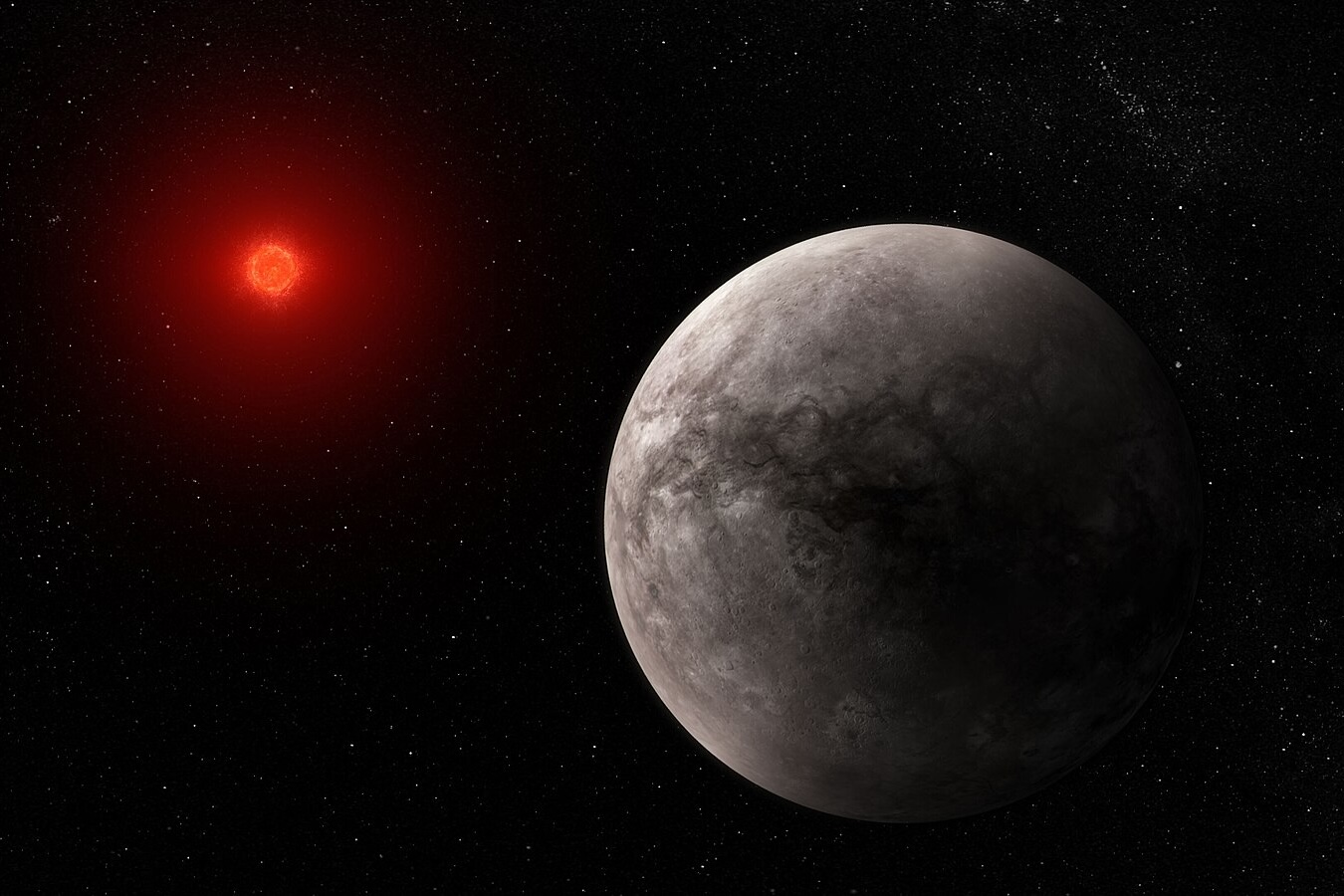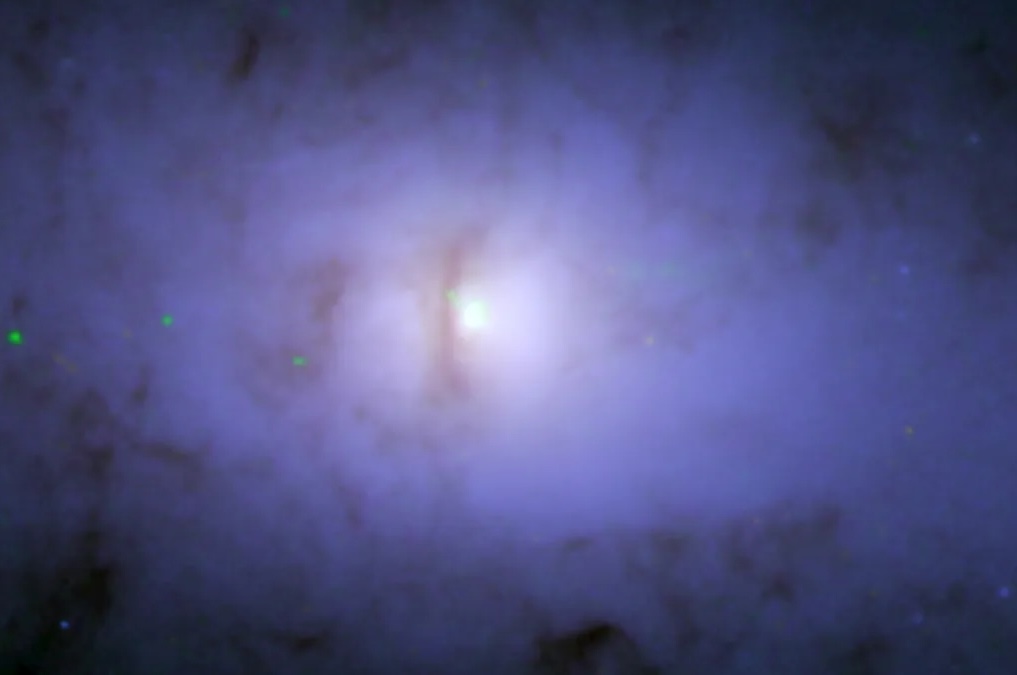In the journals JGR: Planets and JGR: Machine Learning and Computation, BAERI Research Scientist Ariel…
Exoplanets! — Part 1
This two-part series is all about exoplanets, planets outside of our solar system, and how they and the stars they orbit are a key part of the search for extraterrestrial life.
In this episode, Part 1, we talk with two BAERI researchers, Christina Hedges and Ann Marie Cody, also a PI at the SETI Institute. We’ll hear about their work on exoplanets, weirdly behaving stars, and how it connects to the search for alien superstructures.
Listen here or on Apple Podcasts, Audible, Soundcloud, Spotify, or Google Podcasts.
This transcript has been lightly edited for clarity.
BAERI: This is for the Love of Science, a podcast from the Bay Area Environmental Research Institute. I’m Erin Bregman. In this show, we hear directly from the institute’s scientists, engineers and mission specialists about the groundbreaking research they’re doing right now in Earth, environmental, and space sciences, and learn about what their work can teach us about our Earth and our universe.
I’m very excited to share this two part series with you all about exoplanets, planets outside of our Solar System, and how they and the stars they orbit are a key part of the search for extraterrestrial life. In this episode, part one, I talk with two BAERI researchers, Christina Hedges and Ann Marie Cody, also a PI at the SETI Institute. We’ll hear about their work on exoplanets, weirdly behaving stars, and how it connects to the search for things like alien superstructures. In part two, we’ll learn about how you can get involved in learning to look through all this data yourself through a citizen science project called Planet Hunters Coffee Chat. That’s all coming in part two. But first, here’s Christina Hedges.
Christina Hedges: My name is Christina Hedges, and I work at NASA Ames and at the Bay Area Environmental Research Institute. I’m a research scientist and I mostly focus on working with exoplanets. I do a lot of detection work, how do we find them. I do some characterization work, which is about how we learn more about them, what their atmospheres are like. And I also do a lot of work on developing open source software and doing data science and astronomy.
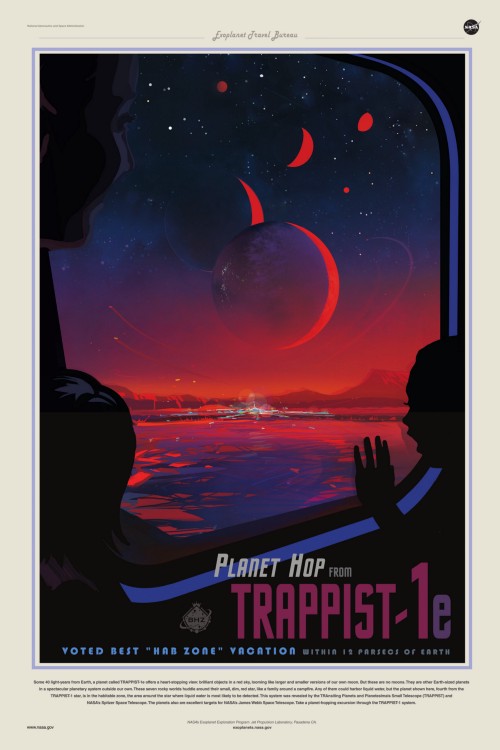
Image: NASA-JPL/Caltech
If you care about exoplanets, we’ve really learned now that you need to understand the stars that they go around to understand the planets themselves. And it’s both from a point of view of, well, you know, if the star is really active and has flares and coronal mass ejections and solar winds and all of these things, that impacts life potentially on that planet, that impacts the atmosphere of that planet, but also most of the methods that we use to discover exoplanets, it’s all relative to the star. So for example, in the transit method, we can learn the radius of the planet relative to the radius of the star.
BAERI: And can you briefly explain what the transit method is?
CH: The transit method is one of several ways to detect exoplanets. It’s the method that Kepler used. It’s the method that TESS currently uses. What’s going on here is if you can imagine a point of light that’s really, really far away from you. So imagine if I had a torch, but I was really, really far away from you. And from your perspective, you can’t tell that the torch is round. You can’t tell that there’s some shape. For you, it’s just a point source that’s really, really far away. That’s like stars to us. To us, they’re just point sources. We can’t resolve that they’re sort of circles in the sky. They just look like infinitesimal dots.
When you have a planet move in front of that star, or if I would move something in front of the torch in front of you, rather than seeing that there is a round thing going in front of another round thing, you’re going to see that the light actually just gets slightly dimmer because I’ve blocked a little piece of it. And then if I move that object away, the light will go back to the same brightness it was before. And this is exactly what happens in the sky. If you get really precise images from telescopes like Kepler and TESS, and even some ground based telescopes, you can take these really precise images, and when the planets move in front, you get to see this very small dip this small change in light due to a small planet moving in front of it. When those dips in light come back every time the planet goes around and does a full orbit, we use that to determine that there’s a planet that.
Ann Marie Cody: Just to clarify, I go by my full name, Anne Marie. Sometimes people are confused by that. Anne Marie Cody. Yeah, I’m a research scientist and astronomer, and I enjoy working with space telescope data for the most part. I specialize in the youngest stars, and now I’m branching out to slightly older stars doing searches for crazy things like extraterrestrial intelligence.
BAERI: One of the things that I was interested in was looking for natural causes of dimming for stars and, like, what are all of the different possible natural causes of dimming, like when you see that happen, what could it be?
AMC: Well, the most prominent fading events are usually not the star itself, but something passing in front and blocking the starlight. There are a number of things that can go in front of a star, like the most common one is a companion star. So, we have eclipsing binary systems, planets, obviously, create much smaller dips, and brown dwarfs and things like that. But more interesting things like dust disks, which we tend to see around the youngest stars, and that’s basically the material left over from the star’s formation, and that’s where planets are presumably starting to build up. And it all depends on your viewing geometry. So if you’re kind of looking through one of these dust disks, then parts of it will, as it orbits around the star, will block it. The same with the binary systems, like the stars have to be aligned. So, yeah, it’s usually a star or dust. We are looking for more artificial things like structures built by intelligent civilizations. We have not found anything of that sort, but there are the hypotheticals as well.
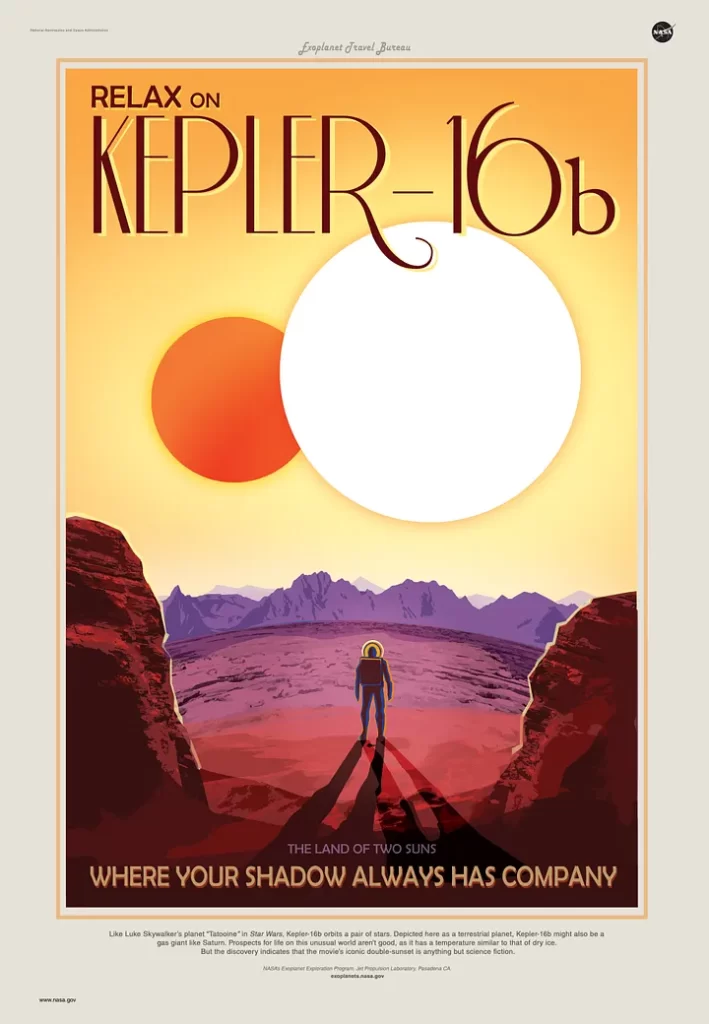
Image: NASA-JPL/Caltech
You can get other types of modulations in starlight caused by magnetic spots on the star’s surface. So the Sun has sunspots, but they’re very small compared to the total surface area of the Sun. But the younger stars, and especially the ones that are lower in mass than our Sun, tend to have much larger dark spots on their surface. So as the star rotates, and if there is a spot or two as they come into view, the star will appear to fade and then go back to its regular brightness level. And stars, some of them, like, their whole surface goes in and out, like blowing up a balloon. Others, like one part of the surface will go out while some of it goes in, and we call these multimode pulsations. So there are different types of pulsating stars. In fact, the Sun pulsates but at a very, very low level. So the Sun is basically, like its whole surface, parts of it are jiggling in and out about every five minutes, but it’s such a small effect that you wouldn’t notice it with your eye. There’s this whole area of astronomy that studies that called asteroseismology.
CH: Asteroseismology is the study of stars in a way that is related to sound moving through them. So you can think of stars as like these giant spherical speakers, they’re this big ball of gas, and basically they’re this sort of roiling, boiling, tumultuous big gas ball. And all of that roiling and boiling causes the sort of envelope of this star to oscillate, to like move and vibrate in a way that’s basically because of the sort of speed of waves and pressure waves in the atmosphere of the star. And it’s very similar to sound waves moving through gas. And the nice thing about that is you can kind of use them, use these sound waves, if you understand them really well, it’s a little bit like if you’ve hit a bell or a musical instrument, you’ll get a certain kind of sound wave, you’ll get a certain pitch, you’ll get a certain… you’ll get a certain sound out of that instrument. And that’s what happens with stars. You get a very particular kind of patterned sound, if you like, that comes out of a star based on the shape and size of whatever’s making that noise. And so we can use this to better understand what sort of stars make these kinds of particular rings, do these oscillations. And so you use it to learn more about the size and the mass of these stars. And so understanding with asteroseismology using this sort of clever ringing, you can learn the radius, the true size of the star and use that to understand the true size of the planet.
AMC: We’re looking at something like 50 million stars with the TESS satellite. You just can’t look at that many with your eye. So my colleagues and I are attempting to train some machine learning algorithms to do automated classification. So basically kind of reproduce what we do and say, Oh, this is an eclipsing binary, we’re going to put it in that box, and oh, this is a rotating spotted star, we’re going to put it in that box, and then see what’s left. And is there anything that just…the machine can’t classify? And then we go, look at sort of the outliers that are picked out by these algorithms. It’s basically this whole area in computer science called anomaly detection, and it’s similar to the algorithms that, like, your bank might use to detect fraud on your card. You know, so they can classify, okay, you go to the grocery store every week and then you get gas. But like, oh, wait a minute, she just bought a $3,000 sofa. Is that strange? And then they call you up and say, Is that you? So we’re kind of doing the same thing, but with stars.
CH: Tools and software and data processing is a huge part of astronomy now. You know, when we think about the future of exoplanets and think about Roman, for example, there’s just so much data coming. I’m already completely overwhelmed with the amount of TESS data. It’s too much for me and this is just the beginning. We’re going to have so much data, and also higher fidelity data. You know, when you think about James Webb, we don’t just have to deal with more volume, we have to deal with high fidelity, you know, more precise data.
And so we have to move into an era where we have to get good at throwing away things that aren’t relevant and only putting effort into places where we think there’s a good probability that there will be a planet. And people will be able to use some machine learning tools to help them. The citizen scientist tooling as well is really important for this. There’s lots of cases where there’ve been huge astronomical surveys, and if we’d have been using a little sifting techniques, we’d have missed some really interesting stuff that only citizen scientists picked up on. Because, you know, when you sort of click through some astronomy images, you can tell that this one stands out or I’ve never seen this kind before. And so it may be a joint effort between machine learning, astronomers, and citizen scientists.

Image: NASA-JPL/Caltech
AMC: So it’s kind of a question of like every time you get new data, see how you can classify things. And then are there objects left over that don’t fit into any of the categories? And that actually happened with the Kepler mission. And that’s kind of like a back story to how I got into looking for weirdly behaving stars. Because there was this weird one known as Boyajian’s star. And there’s been a large citizen science program called Planet Hunters that was designed to assist astronomers in identifying transiting planets with missions like Kepler and now TESS as well. And basically, the Citizen Scientist online program would just show the profile of the star’s brightness over time, that’s the light curve, show it to the citizen scientists and say, you know, what do you see here? Do you see a dip that might be a planet? But they could put their comments in if anything was worthy of looking at. And so for this one object by Boyajin’s star citizen scientists were like, uh, something weird is going on here, we’ve never seen this before. So, you know, their brains could classify the behavior because they’d been trained to look for transiting planets. This thing had much larger brightness dips, and they were not repeating periodically like you would expect for a single object in orbit.
And I’ve seen stuff like that among the young stars from these dust disks. But Boyajin’s star is not a young star. So young in astronomy is like a few million years old. Sounds old to us, but you know, compared to the Sun, which is billions of years old, that’s more like Boyajian’s star, and you would not expect this dust to be left over from its formation. It should be long gone or in planets or something. And indeed, some of the astronomers who were in on the discovery used infrared telescopes like NASA’s Spitzer Observatory to try and look for dust around the star, and they didn’t see any. So it was like, what? There’s got to be something passing in front of this star, but we can’t see it. What on earth is it
CH: That star in particular, if you look at it, it actually looks like there’s been a problem. It looks like there’s an error. It looks like there is some strange telescope malfunction, and a lot of people who knew what they were talking about would have thrown it away. And a lot of people did throw it away, and it was the citizen scientists that said, no, it doesn’t look like a systematic, it doesn’t look like a telescope error, and it doesn’t look like anything else in the data set. And that was absolutely true. And that star is very interesting and still, I believe, somewhat unexplained.
AMC: We now think that it is dust, it’s just maybe larger particles that we can’t observe at other wavelengths, but it’s pretty unique. And essentially every time we look at a new star with a telescope and we see its brightness fluctuation, we kind of ask, does it fall into one of these categories that we’re already familiar with?
It’s only been in the last decade or so that these space telescopes came online and started looking more or less continuously at stars for like weeks or even months at a time. And so for those objects that are doing interesting variations on relatively short timescales, we didn’t really appreciate their variability behavior until we started looking with space telescopes. So the ground based telescopes can obviously look at stars and measure their brightness, but you get kind of sparse data points compared to space because you’ve got weather and the sun comes up, or maybe you’re an astronomer that has to share the facility with other people. So it was obviously known for a while that there are all these variable stars out there, but they weren’t necessarily that easy to classify, and particularly the very young ones that I study. So in the past decade, we’ve started looking at these young stars in detail with the space telescopes, and behaviors that we’d never actually seen before popped out. So initially those were weird because we just weren’t familiar with them. But then the more young stars we looked at, the more we saw doing these. So some of them had like brightness outbursts. So they’re kind of like steady and then all of a sudden they get brighter and then they’re steady again and then they get brighter. And we haven’t really seen too much of that.
BAERI: Once you identify the weird things, what’s the process to figure out what’s actually going on?
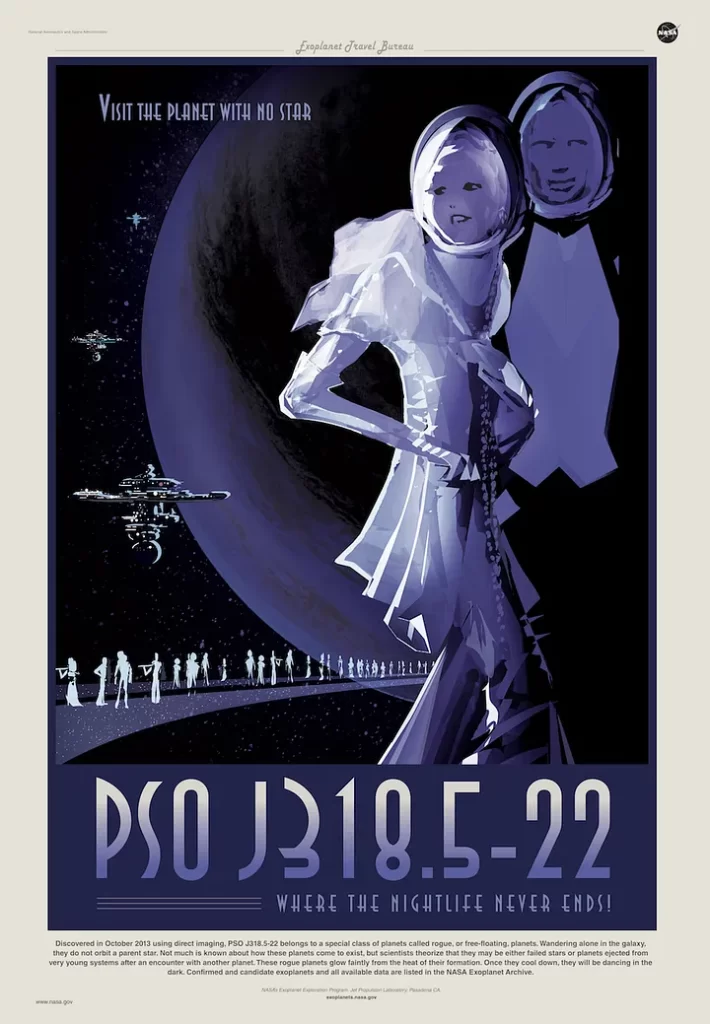
Image: NASA-JPL/Caltech
AMC: Yeah. Well, so it’s complicated. The first thing that I completely omitted is that there is weird stuff that’s generated by the telescope itself, and the light patterns of what’s coming into it that’s… There’s scattered light from our own Earth. This was not as big a problem with the Kepler telescope because it was in what’s called an Earth trailing orbit. So it was basically following us around the Sun. But the TESS satellite is a bit closer to Earth, and when it looks in certain directions, sunlight that bounces off the Earth’s surface and its clouds does kind of get into the telescope a bit. We can still see the stars and everything, but it creates this background light behind the stars that we have to try to remove, and that removal process isn’t perfect. So unfortunately, it turns out that a lot of the weird things that we see so far are artifacts. So the first step is basically to see, is this actually the star that’s doing it or not? And then we kind of investigate whatever basic information we can find on the star. Like, have other people observed it? Have they looked at it with ground based observatories? Is there any kind of history? What’s the temperature and the size of the star? How old is it? Does it have any known companions in orbit around it, things like that. And then once we’ve gathered that information, we can kind of use it to assess things like, is it a young star? Is that why it’s behaving weird? No, it’s if it’s an older star, are there any natural explanations?
And then the other thing that we’re planning to do is, one of my colleagues has some ground based follow up time at this network of telescopes called the Las Cumbres Observatory. And they’re smaller telescopes, but they’re scattered around the globe. So in principle, you can get almost 24/7 coverage of your star of interest because you observe for a while with one telescope, and then when the sun comes up, you switch to another one. But the nice thing is you can also look through different filters, which we can’t currently do with the space telescopes. You just have like one sort of broadband white light filter. But if you can look at the star in red versus blue or something with these other telescopes, it may behave differently at the different wavelengths. And that tells us something about what’s actually causing the strange behavior.
So for dust, the fading events that we see are typically deeper at red wavelengths than blue because the dust preferentially affects the light that’s coming through it from the star. Kind of like if you look at the Sun in the middle of the day, you see like blue sky around it. But then if you look at the sun at sunset, when the light is coming through all those particles in the atmosphere, then it’s red. It’s kind of like that. So if we see that behavior with the different filters, then we might surmise that it’s some kind of dust. If instead, the variability is exactly the same at all wavelengths, that’s really interesting, because that would be something more like an opaque object that blocks all light that tries to go through it. So that would be more in line with what we’d expect if there were some real artificial structure in orbit around a star.
BAERI: So it’s really like a process of elimination of, well, let’s look at this thing, and if that doesn’t explain it, let’s keep looking and keep looking
AMC: Right, because the last thing you want to do is announce that you found something really fascinating and then realize like it’s either a dud or something silly.
BAERI: With the number of stars that you’re looking at, how many of them do you expect to be not classifiable that you’ll have to like, kind of go back to and keep looking at?
AMC: Yeah. Well, I mean, if we extrapolate using just the one data point we had from Kepler, like Boyajian’s star was really kind of the only thing that couldn’t be classified. In the main mission Kepler looked at 200,000 stars. If you include the K2 mission, you might double that or say 500,000. It’s about a factor of a hundred more stars that we’re looking at with TESS, granted over slightly shorter timescales. But we might find ten to a hundred things if we’re lucky, or we might find out that Boyajin’s star was just extremely rare and that we don’t find anything like that. Yeah. And then in terms of like really out there artificial stuff, we obviously have no idea what we’ll find. But the goal is to basically put a limit on the frequency of artificial structures in orbit around relatively bright nearby stars say, you know, there’s at most, you know, X number of alien civilizations in our galaxy that know how to build these things that may either be for communication or harvesting energy or something like that.
But in principle, it’s actually more efficient if you want to look for a really advanced life. Future facilities like the James Webb Space Telescope will be following up on exoplanets that might be in the habitable zone of their star to look for signatures of things like water and oxygen, and things that, at least here in our solar system, seem to be necessary for life. But there really aren’t that many candidates that either we found or that James Webb has the observational sensitivity to actually detect life. And if it does, there’s no way to determine, like, is this intelligent life or is it like single celled organisms? So we’re going straight for the intelligent stuff, which might just not be there, but we’re looking at a much, much larger sample, like instead of a dozen, you know, 50 million or something. So one could argue in some ways we have a better chance, but in some ways we don’t.
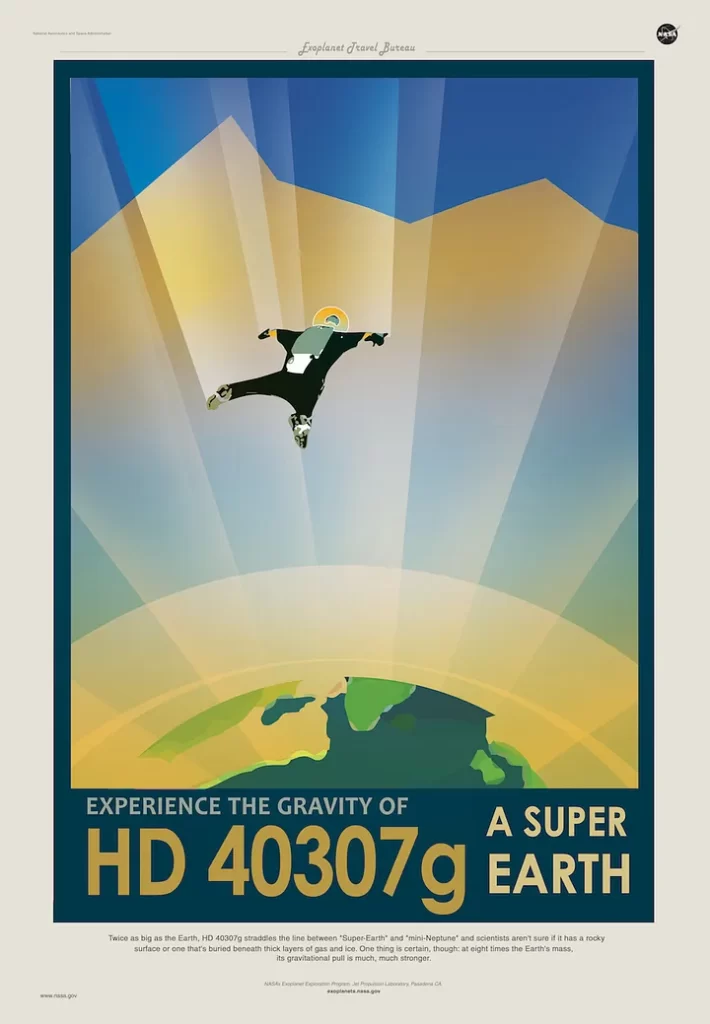
Image: NASA-JPL/Caltech
It’s just an improbable thing, even if you look at thousands or millions of stars, compared to the total number in our galaxy… Like, I think people used to say that we basically if you consider the whole ocean, it’s like we’ve looked through a teaspoon. I think we’ve searched through more now, like my colleagues using radio telescopes, but I think it’s basically like a bathtub’s worth of water compared to the ocean. So there can be stuff out there that we’re just not seeing. So we kind of have to use all the different methods possible to find out what is in our galaxy.
CH: I think the only thing that I would want everybody to know is how much we’re now in a regime where anybody can contribute to finding exoplanets. There’s a lot of student papers or student scientists who are finding really interesting exoplanets buried in the data. And it does require some of that, like a cross between some expertise and some willingness to go through and look. And a lot of the professional astronomers are so swamped that they’re not able to look through 50 million light curves. And some, some citizen scientists can sort of play the lottery a little in looking at these interesting targets and just checking like, is this one a bit unusual? Is this one valuable? And I think there’s a lot of planets out there that TESS is going to enable the discovery of. Everyone can join in. And we have so many open source tools to help people that the barrier for entry is lower than it’s ever been.
AMC: Even though some of us are employed officially as scientists and other people have different jobs, like that everyone can be a scientist, that it just requires some level of curiosity and wanting to know how things work. So I like to think that everyone is a scientist and that it’s also kind of, but it’s my duty as a professional one to kind of promote how science works, how the scientific method works so people can be able to assess things for themselves.
CH: So I think the Citizen Science Accelerator has a lot of great tutorials and videos and tools to get people started on this. I would start with the lightcurve package and I would look through the light curve tutorials. But yeah, the Citizen Science Accelerator should have great information about how to do that, and that’d be a great place to start.
BAERI: Thank you to Anne Marie Cody and Christina Hedges. Our music is by Danny Clay. You can learn more about the search for exoplanets by listening back to our very first episode, How to discover a New Planet, or jump in and start learning now at the Planet Hunters Citizen Science Accelerator at Planet Hunters (dot) Coffee. Again, that’s Planet Hunters (dot) Coffee, spelled exactly how it sounds. That’s it for this episode, see you next time.


